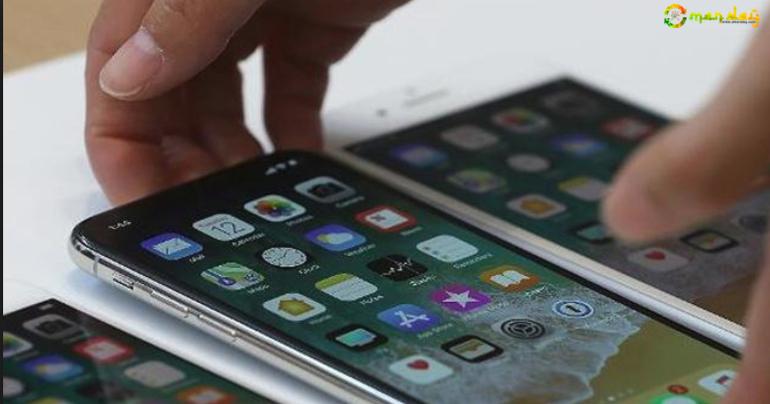Apple Loop: Danger As iPhone Sales Fall, Serious iOS Problems, MacBook Fights For Market Share
Taking a look back at another week of news from Cupertino, this week’s Apple Loop includes the latest iPhone sales figures for 2017, Apple’s OLED screen problems, the second generation AirPods, MacBook’s market share, lots of OS updates, and smart punctuation arrives.
Apple Loop is here to remind you of a few of the very many discussions that have happened around Apple over the last seven days (and you can read my weekly digest of Android news here on Forbes).
Gartner Reports Falling iPhone Sales
Apple saw a dramatic annual fall of 1.2 million handset sales in 2017 compared to 2016, and a fall of roughly four million unit sales in Q4 2017 compared to Q4 2016, reports Gartner.
While Apple's market share stabilized in the fourth quarter of 2017 compared to the same quarter in 2016, iPhone sales fell 5 percent. “Apple was in a different position this quarter than it was 12 months before," said Mr. Gupta [Anshul Gupta, research director at Gartner]. "It had three new smartphones — the iPhone 8, iPhone 8 Plus and iPhone X — yet its performance in the quarter was overshadowed by two factors. First, the later availability of the iPhone X led to slow upgrades to iPhone 8 and 8 Plus, as users waited to try the more-expensive model. Second, component shortages and manufacturing capacity constraints preceded a long delivery cycle for the iPhone X, which returned to normal by early December 2017.
Apple has already highlighted increased revenue on these sales during Q4, but you can’t keep making the production of the iPhone more efficient and growing profits while unit sales are on the slide… something will have to give, as I discussed earlier this week.
On Cook’s arrival there was a lot of slack in Apple’s systems, and reducing slack increases profits. In that sense Cook’s management of these issues was the biggest win for the iPhone. Although year-on-year sales have been broadly down for the iPhone since 2015, Apple’s revenue and profit have climbed, due to increasing efficiency boosting margins and the marketplace accommodating higher prices per device.
But removing slack is a one-time option, you are then left with a taut bowstring that is under increasing pressure to deliver. And taut strings have a habit of snapping at awkward times.
As for close rivals Samsung? 2017’s sales were up 14.8 million units compared to 2016. More details at Gartner.
Sharing The Advantage Of OLED
One of the beneficiaries of iPhone X sales is Samsung’s display division, which supplies the OLED screens for the flagship smartphone. Which also means that the reported fifty percent cut in orders of iPhone X units in Q1 2018 will leave the South Korean company with an excess of stock and production capability. That could benefit the mid-range competition as OLED panels flood the market:
During its Q4 2017 earnings call, Samsung noted that its display business was not built around a single supplier: "It is hard to give specific details, but we have been trying to diversify our clients and reduce reliance on a certain customer to build a healthy portfolio. The company’s business will not be affected much by a certain customer.”
That healthy portfolio could be very interested in helping shift OLED panels, especially if the cost comes down through Samsung lowering the margins. Because of Apple’s reduced orders, the market could see OLED become a more popular choice in the mid-range handsets… which would rob the iPhone X of one of its few clear-cut advantages in the market that helps it command a four-figure price.
Take Two For Wireless AirPods
Naturally Apple is looking to update its wireless headphones. The AirPods have become visible signatures of the Apple brand and the technology in them is one area where Apple hopes it can make a difference and help continue to push ‘brand Apple’ as revolutionary. Mark Gurman reports:
The model coming as early as this year will let people summon Apple’s Siri digital assistant without physically tapping the headphones by saying "Hey Siri." The function will work similarly to how a user activates Siri on an iPhone or a HomePod speaker hands-free. The headphones, internally known as B288, will include an upgraded Apple-designed wireless chip for managing Bluetooth connections. The first AirPods include a chip known as the W1, and Apple released the W2 with the Apple Watch last year.
MacBook Goes Fourth
According to Trendforce’s analysts, the MacBook family overhauled Asus to reach fourth place in the laptop market share charts during 2017. That share isn’t expected to rise dramatically during 2018, but a consolidation of fourth place is likely, as I reported earlier this week:
Ahead of Apple remains Dell, Lenovo, and market leader HP. Current estimates for 2018 shows Apple closing the gap to the podium places, but not overhauling any of the competition within twelve months. Given there are not expected to be any fundamental changes to the MacBook family as presented to the public - although Apple will take the opportunity to work on custom silicon inside the hardware.
That custom silicon will help improve the speed of the laptops, increase the security on offer to consumers. It also makes clear that the MacBook family is now focused on a simpler battleground as it moves towards increasing the market share by reaching out to the general consumers. Apple has decided that speed and specifications is the way forward for its desk-bound accessories to the iPhone.Minor But Vital iOS Update
The main fix is that Apple has removed the potential of a Telugu character crashing the system, resulting in an boot-loop. Any new features are still earmarked for iOS 11.3. Nevertheless for security and bug-fix reasons, this update is very strongly recommended. Amit Chowdhry reports:
iOS 11.2.6 is considered a minor point software update so Apple did not add any new notable features to it…
Apple’s release notes for the iOS 11.2.6 update says that two bugs have been fixed for the iPhone and iPad. Apple said that the issue where a certain character in the Telugu language that could cause apps to crash has been fixed. And the other bug that was fixed involved problems where third-party apps failed to connect to external accessories.
Other OS Updates Also Recommended
It’s not just iOS that has had the issue with Telugu characters. WatchOS, macOS and tvOS have all picked up small updates to address the vulnerability. Frankly this is such a basic error to catch in terms of malformed messages I’m surprised it made it out to retail products. In any case Zac Hall rounds up the updates:
Apple has released new software updates to address the Telugu character bug that affected devices running the latest public version of Apple’s software. Updates available today include iOS 11.2.6 for iPhone and iPad, tvOS 11.2.6 for Apple TV, watchOS 4.2.3 for Apple Watch, and macOS 10.13.3 supplemental update for Mac.
And Finally…
It’s a small quality of life update, but for those who care about the finer typographical details on their smartphones, the inclusion of smart punctuation in iOS 11 will lower their blood pressure. Jon Gruber reports in excruciating detail:
When enabled, quotes and apostrophes (like "this" and 'this') are automatically turned into their proper counterparts (like “this” and ‘this’), two hyphens in a row (--) are turned into a proper em-dash (—), etc.
I say “finally” because MacOS has had the feature in the standard text editing system for many years, and I can’t think of a good reason why it wasn’t in iOS years ago. I can say it’s not a difficult programming job to solve because I’ve solved it in the more difficult context of smartening punctuation in prose without messing up the necessary dumb quotes inside HTML tags.
tag: blog , technology
Share This Post






